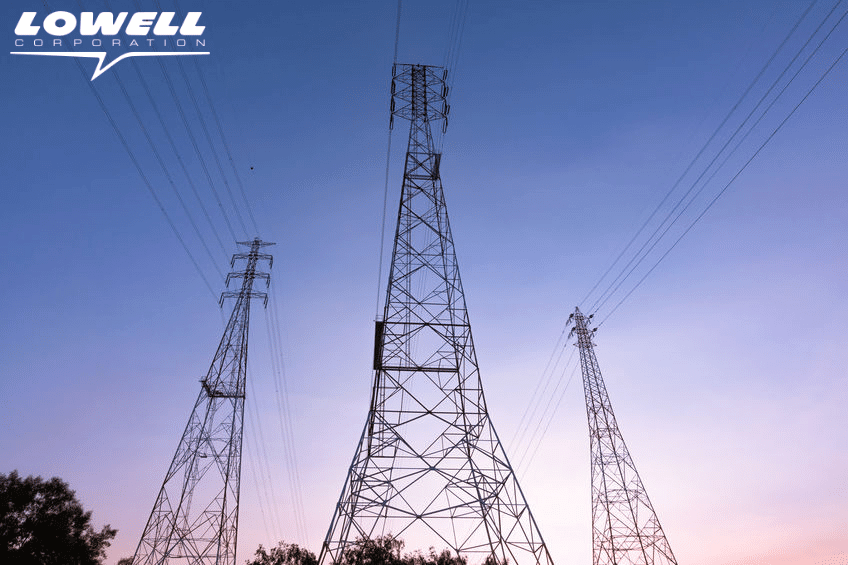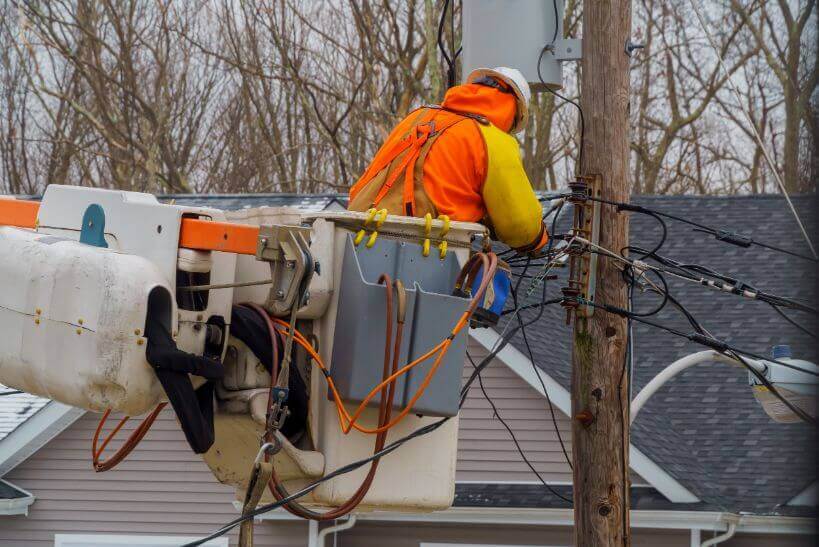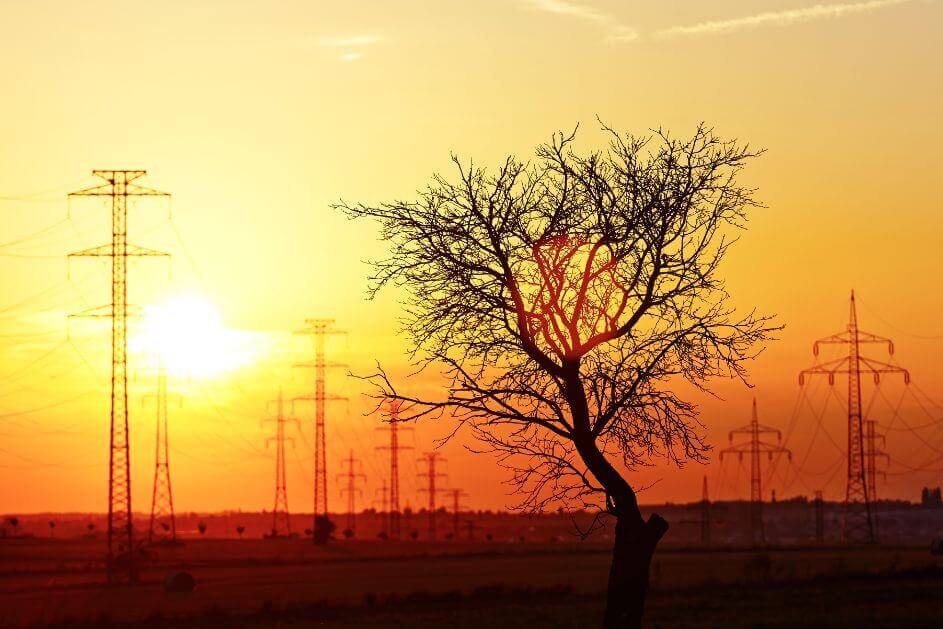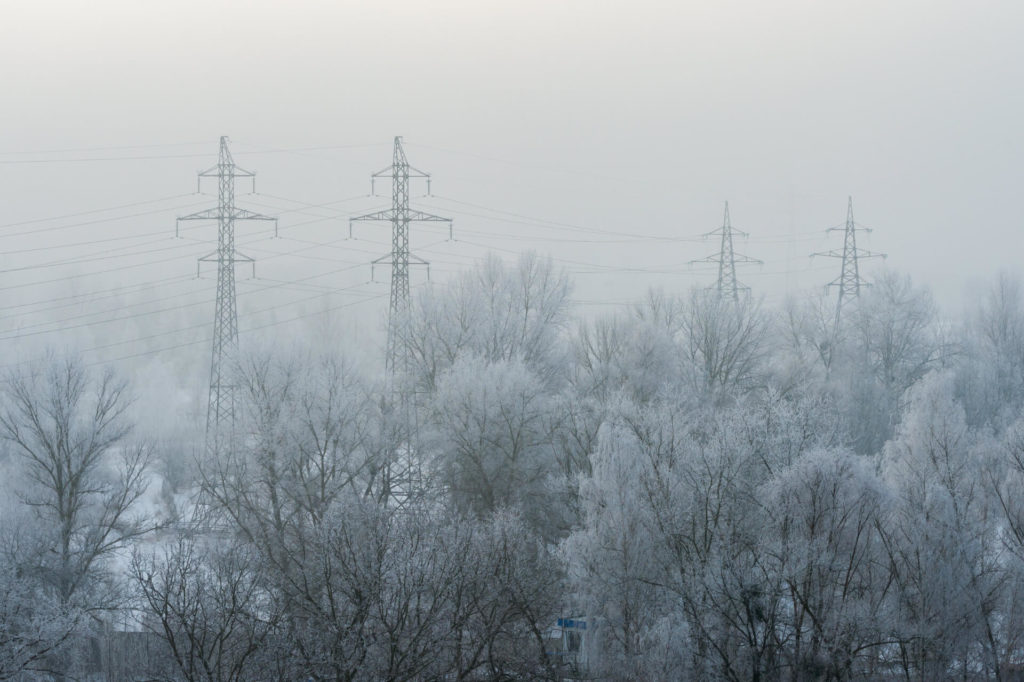The Real Cost of Major Storms For Utility Companies
Storms aren’t just a test of infrastructure—they’re a financial and logistical nightmare for utility companies. From hurricanes and wildfires to winter storms, extreme weather is hitting harder and more often, leaving utilities scrambling to restore power and reinforce aging systems.
The real question: Are they doing enough?
From the massive impact of hurricanes to the rising costs of wildfires and power outages, this blog breaks down:
- The financial toll of extreme weather on utility companies
- How FEMA funding plays into long-term infrastructure improvements
- What companies like Con Ed and PG&E are doing to prepare for the next storm
- The role of linemen and the tools that make utility work safer and more efficient
Storms aren’t slowing down—utility companies can’t afford to, either. Keep reading to see what’s at stake.
The Effects of Hurricane Katrina
When Hurricane Katrina’s punishing storm surge plowed ashore in 2004, it swamped seven of the Coast Electric Power Association’s substations, vital to powering thousands of Mississippi homes and businesses. The facilities are now fully operational, though they remain at the same elevation. Today, they are just as vulnerable to catastrophic hurricanes.
Such storms are a growing threat. An Associated Press analysis of industry data found that severe weather is the leading cause of significant power outages on the nation’s power grid. According to the AP, the number of weather-related power outages has climbed over the last decade. The most significant spikes were in 2008 and 2011.
That leaves Coast Electric and other utilities across the country struggling to balance customer costs with the need for improvements. To counter the rising number of violent storms, floods, and droughts threatening the U.S. power grid‘s core infrastructure, they need to act quickly.
The eye of Katrina ripped through the coastal city of Waveland in late August 2005. It leveled neighborhoods, destroyed infrastructure, and knocked out power to Coast Electric’s entire coverage area.
Rebuilding After Katrina
Facing sweltering summer heat and $110 million in damage, Coast Electric had to pick up the pieces. The small nonprofit cooperative focused on restoring power to customers as quickly as possible. They repaired the old substations that flooded to pre-storm conditions. At the time, raising or moving them elsewhere would have been impractical.
“We’re only a few feet above sea level right here,” Brown said during a recent visit to a Waveland substation.
Coast Electric made some crucial improvements post-Katrina; it used a large mound of dirt to elevate a new substation 18 feet above sea level. But raising the old substations that flooded would cost Coast’s 68,160 customers millions of dollars, Brown said.
The Continuing Battle Against Hurricane Season
When Hurricane Irene hit the Northeast in 2011, it marked the first time in Con Ed’s history that more than 200,000 customers lost power from a storm. Superstorm Sandy struck just 14 months later, quickly followed by a devastating Nor’easter, leaving 1.1 million customers in the dark.”It was clear to us that weather patterns were changing fundamentally. Severe weather events were becoming more frequent and devastating,” Allan Drury, a Con Ed spokesman, said in an email.Con Ed is spending $1 billion to harden its system. Drury said the utility could afford all the equipment upgrades it wanted.
The test will be when the next powerful storm hits.
Hundreds of utility companies own and manage the equipment that makes up the U.S. power grid. They range from large investor-owned companies like New York’s Consolidated Edison to small municipal utilities and cooperatives like Coast Electric. Each faces a unique set of challenges.
Looking for high-quality highline tools? Read our product guide for utility workers.
The Lasting Consequence of Power Outages
No doubt improvements are costly for utility companies and their customers, but so are outages. A 2013 report by the White House said weather-related blackouts cost the U.S. economy an annual average of $18 billion to $33 billion, adjusted for inflation, from 2003 to 2012.
They can also be deadly. The report said 50 deaths in Sandy’s aftermath were due to power outages. This figure included senior citizens who died from hypothermia and others poisoned by carbon monoxide from generators.
Funds from the Federal Emergency Management Agency are available to help utilities rebuild after catastrophes. The Mississippi cooperative received about $100 million in FEMA public assistance grants. However, the money allowed it only to repair the flooded substations to pre-storm conditions. The flooded substations powered about 6,500 accounts, including some in Coast Electric’s most populated coverage areas. The co-op provides power to customers across most three counties, from urban coastal areas to rural communities farther inland.
Utility Companies and FEMA
FEMA offered more funds that would help to raise the flooded substations. Still, the co-op did not apply. Brown said that cost-effectiveness assessments and environmental considerations would have taken too much time and would have delayed getting the lights back on.
Once the work began, Coast Electric could not change the grant’s terms to improve the sites, Brown said. The seven rebuilt substations in Katrina’s area retained the same elevation — when scientists were already warning of rising sea levels and the threat of more frequent severe weather.
A study published in Risk Analysis in May found that the U.S. power grid is increasingly blacking out when hit with severe weather. The infrastructure lags behind other developed nations in terms of reliability.
“I think it is an open question as to whether utilities are investing enough in the infrastructure needed to harden the system against storms and on simple but effective things like tree trimming,” said Roshanak Nateghi, the report’s lead author and a professor at Purdue University.
The California Droughts
Regulators in drought-stricken California ordered the state’s investor-owned utilities to follow regulations. The goal was to set priorities for inspecting and removing dead and sick trees. Climate change has facilitated and exacerbated numerous wildfires” that have damaged and threatened their facilities. Regulators said utilities could ask the California Public Utilities Commission for additional funds to address wildfire threats.
In September, the wildfire killed two people, destroyed 475 homes, and scorched 70,000 acres in the tinder-dry Sierra Nevada foothills. Homeowners and their attorneys asked whether San Francisco-based Pacific Gas & Electric Co. did enough to clear dry trees flanking its power lines.
Barry Anderson, a PG&E vice president, acknowledged mid-September that the fire could have originated when a pine tree “may have contacted a PG&E line in the vicinity of the ignition point.”
More than 50 victims have sued PG&E and its tree-trimming contractors for property damage. One recently filed suit also blames the companies for the death of an 82-year-old man in Mountain Ranch, California, claiming the companies “showed a conscious disregard for human life.”
The Rising Cost of Wildfires
PG&E spokesman Joe Molica said the company had spent $260 million to prepare for extreme weather and drought. This year alone, he noted PG&E hired 350 arborists and 19 foresters to inspect and remove dead trees and brush near the utility’s 134,000 miles of lines, bought cameras for fire lookout towers, and funded rural fire-safe councils.
State fire officials are still investigating the cause of the blaze. Inspectors claimed it was the second-most devastating fire in a drought year. More than 6,000 wildfires are about one-third more than the recent national average.
In January 2025, Southern California faced a series of devastating wildfires that significantly impacted the region. Over approximately 24 days, from January 7 to January 31, eight major fires burned more than 57,000 acres across Los Angeles, Orange, Riverside, San Bernardino, San Diego, and Ventura counties. The two most destructive fires, the Eaton Fire in Altadena and the Palisades Fire in Pacific Palisades were fully contained by January 31.
While specific financial estimates of the total damage are still under assessment, the extensive loss of life, property, and infrastructure underscores the severe impact of these wildfires on Southern California communities.
Linemen need tough wrenches that can withstand the test of time. Lowell can make your utility work easier.
Utility Companies and Climate Change
Nationally, fragmented data collection makes it difficult to gauge whether utilities have adequately hardened their systems against more extreme weather. Many companies are not required to provide regulators with data about how often outages occur or how long they last.
AP largely adopted the methodology used by the independent research organization Climate Central to chart the number of weather-related outages. Climate Central’s previous 2003 to 2012 study found that weather-related outages were becoming more frequent.
In a study published in August, researchers at Lawrence Berkeley National Laboratory and Stanford University surveyed a sample of 195 utilities. They found that from 2000 to 2012, increasingly severe weather led to longer-lasting outages.
Utilities spent $20.1 billion in 2012 to upgrade their distribution infrastructure. Even so, researchers found that the number of minutes customers have been without power has increased.
“A significant number of the minutes that customers experience having their lights out are still the result of big storms,” said Joseph Eto, the lead author and researcher at Lawrence Berkeley National Laboratory.
How Linemen Prepare for Winter Conditions
As utility companies brace for the challenges of winter weather, a critical focus must be placed on the training and safety measures for linemen. These frontline workers are the unsung heroes who ensure our lights stay on, often working in the most treacherous of conditions. Winter brings unique hazards, from icy surfaces to extreme cold, making it imperative for linemen to be well-prepared and equipped.
1) Specialized Training for Winter Operations
Linemen must receive specialized training tailored to winter operations. This training includes understanding the dynamics of winter storms, learning the best practices for maneuvering and working on icy or snow-covered poles and towers, and recognizing the signs of cold stress and hypothermia. Scenario-based training exercises can be particularly effective in preparing linemen for the realities of winter fieldwork.
2) Appropriate Winter Gear
Equipping linemen with the right gear is crucial. This includes insulated, waterproof clothing, gloves that provide both warmth and dexterity, slip-resistant footwear, and protective eye gear to shield against blinding snow and ice. Companies should regularly inspect and update this gear to ensure it meets safety standards and provides maximum protection.
3) Utilization of Advanced Linemen Tools
The right lineman tools like crank handles or socket wrench sets can make a significant difference in winter. Tools that are designed to be easily handled with gloves and are resistant to freezing or jamming can increase efficiency and safety. Lightweight yet durable tools reduce the physical strain on linemen, which is especially important when dealing with additional layers of clothing and adverse weather conditions.
4) Emergency Response and Communication
Clear communication channels and emergency response protocols must be established and well-understood by all field staff. In winter, quick response to any incident is even more crucial due to the increased risks posed by the cold and difficult terrain. Linemen should be trained in first aid and frostbite recognition, and teams should have a plan for rapid assistance if a crew member is in distress.
Incorporating these training and safety measures will not only protect linemen during the harsh winter months but also ensure that utility services remain uninterrupted, regardless of the weather. By investing in their workforce’s safety and equipping them with high-quality linemen tools, utility companies can demonstrate their commitment to both their employees and their customers.
Key Takeaways
- Major storms are hitting harder and more often. From hurricanes to wildfires, extreme weather is becoming the leading cause of large-scale power outages.
- Utility companies face tough choices. Rebuilding after a storm is expensive, but failing to prepare can cost even more in lost power, infrastructure damage, and public safety risks.
- Federal funding isn’t always enough. FEMA assistance helps restore power, but it often doesn’t cover the upgrades needed to prevent future outages.
- Linemen and their tools are the front line of recovery. Restoring power after a storm isn’t just about speed—it’s about having the right tools to do the job safely and efficiently.
The bottom line? Storms aren’t slowing down, and utility companies can’t afford to fall behind. Investing in preparation, infrastructure, and the best tools for the job isn’t optional—it’s essential.
Ready to save time and money on your utility equipment?
Making Utility Work Easier Since 1869
Lowell Corporation offers the best industrial tools in the industry. Whether you need a crank handle or a valve wrench, your company deserves the right balance between cost and efficiency. Our custom hand tools make tough jobs easier for design engineers, waterworks engineers, and utility linemen. We’re proud to distribute lineman tools with J.L. Matthews to help linemen nationwide.
We’ve been increasing construction, maintenance, and manufacturing productivity since 1869. Let our trusted socket wrench innovations simplify your workload no matter which strap wrench set you need. With our essential industrial OEM tools, you get the backing of the most trusted name in the hand tool industry.
Lowell Corporation is proud to manufacture all of our lineman tools in the U.S.A. in the heart of New England. All Lowell wrenches are 100% guaranteed with our one-year manufacturer warranty against defects in material and craft for one year from delivery.
Make sure to follow us on Instagram for exciting product updates and promotions!





